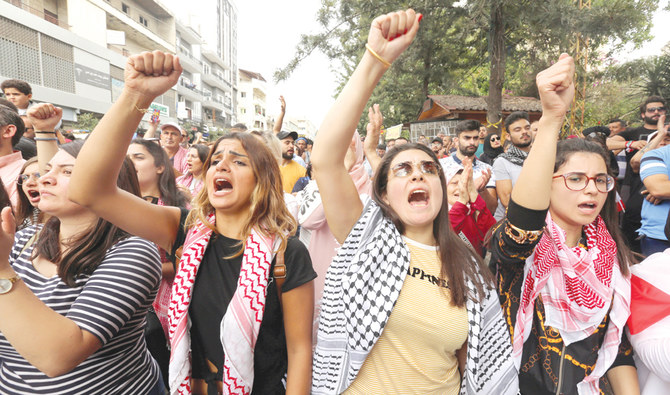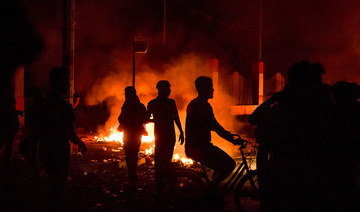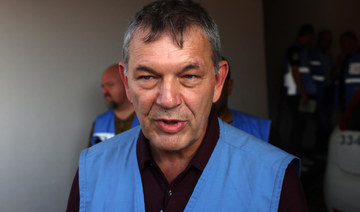BEIRUT: Young activist Duha Sabbagh, a protester in the Lebanese city Nabatieh, had strong words when asked why she has taken to the streets to protest. “Nabatieh rose up because its citizens have to beg to find a bed in the state hospital, so that they can die in it,” she said, referring to her own experience of trying to care for her mother, when she was diagnosed with cancer.
Duha is one of many young people to have joined the protest movement in the southern city, known as being a stronghold of Hezbollah and the Amal Movement, who control its municipal council.
It is the city that elected Mohammed Raad as a deputy, who is the head of the Hezbollah parliamentary bloc (the city gave him 65 percent of its votes) and two MPs, Yassin Jaber and Hani Qubaisi, belonging to the Amal Movement.
Their offices were the first to be targeted in Nabatieh at the start of Lebanon’s protest movement, which is now entering its ninth day.
Thousands of people are demonstrating daily in the city’s central square. Amongst the demonstrators, you can find doctors, engineers, the unemployed, men, women, retirees and young people alike.
Pediatrician Dr. Jamal Badran told Arab News that he takes to the streets every day, heading to the hospital early in the morning to check on his patients and see others in the clinic, before returning to the sit-in.
“The sectarian and quota systems must change. If we fail to do so, we cannot say that we have achieved liberation,” he said.
Nabatieh is the most important city in the Jabal Amel region in southern Lebanon, due to its economic and cultural stature. Every year, the city commemorates the Battle of Karbala, and hundreds of thousands of visitors come to participate in the memorial service. This city is the home of many prominent figures, most notably Sheikh Aref Al-Zain and the scientist Hassan Kamel Al-Sabah. Its people are known for their strenuous resistance to the Israeli Defense Force during the occupation in the early 1980s.
What could make such a place turn on its leaders?
“Those who were in power know what they did to people, 30 years after the civil war. The system is still based on rentiers, corruption, mediation, neglect of people. You have people who are very poor struggling to make a living, while a small group is piling money. They refused and still refuse to hear our cries, and they are determined to take the country to the abyss,” Badran said.
SPEEDREAD
Thousands of people are demonstrating daily in the city’s central square. Among the demonstrators, you can find doctors, engineers, the unemployed, men, women, retirees and young people alike.
“We are used to oppression, but we try to avoid any bloodshed, and the violence against us will not break our will. The pro-bipartisan people sitting in their houses sympathize with our demands.”
Samer Wehbe, a local journalist, agreed. “Amal and Hezbollah were certainly surprised by the popular movement, otherwise they would not have tried to intimidate people at night,” he said.
“They seem to regret their attacks on the people, as a Hezbollah deputy has tried in the past few hours to confirm that what happened was a mistake and should not be repeated, because the demonstrators enjoy popular and regional solidarity.
“There was an attempt to place responsibility for the attack on the municipality, so that the two parties would disavow it, but independent members in the municipality resigned in protest, including a member who is always running on Hezbollah’s lists in the city.”
Wehbe stressed: “Southern Lebanon is one of the most affected areas by the quota system. It is true that we have highways and schools, but people are suffocated by widespread corruption, especially bribes and fabricating files for those who disobey.”
Hatem Ghabris, president of the Nabatieh Engineers Union, said: “The civil movement is a continuation of a movement that began in 2011 against neglect of all kinds. If people dared to confront Israel, would not they dare to face the corrupted class?
“Nabatieh has embraced the protest movement with 15,000 people taking to the street because they are threatened with their livelihoods, unemployment and immigration.
“We prefer to go down to Beirut to protest in its squares, not in Nabatieh, because this move has broken the barrier of fear among the people, especially the partisans, given that our protest is peaceful,” he said.

























